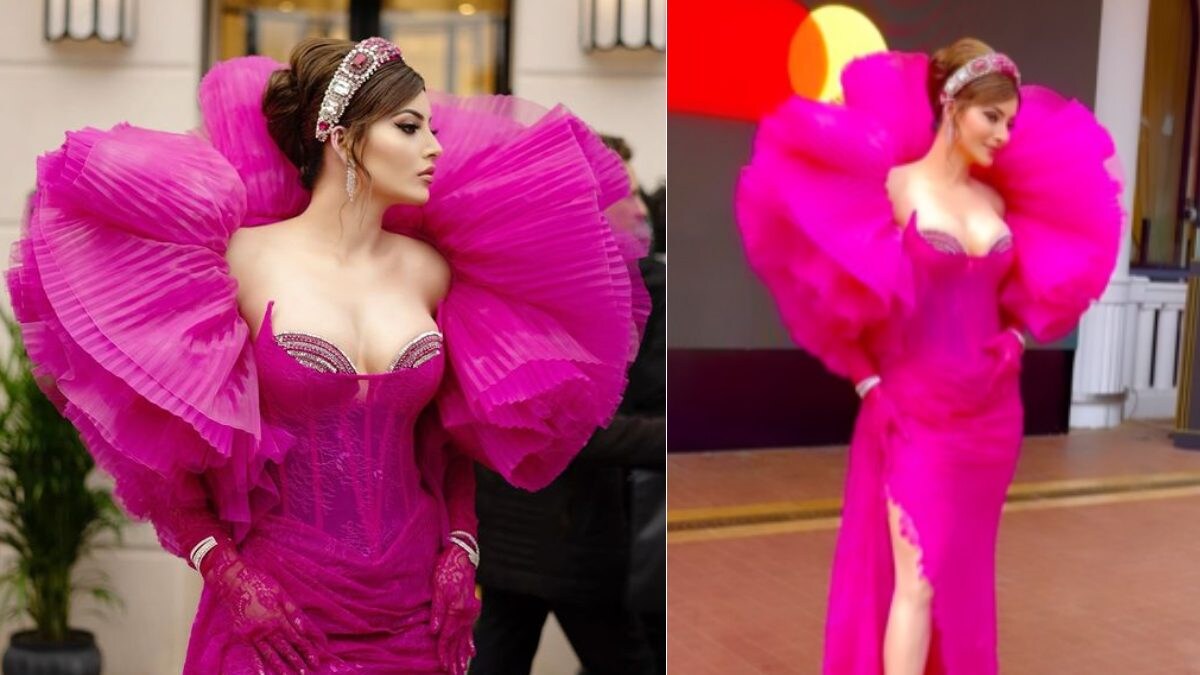For over 100 years, this family portrait held a secret: a fourth figure that had been painted out. Now, the Metropolitan Museum of Art has just acquired the painting, one of the few 19th-century portraits to realistically portray an enslaved person. Its incredible journey to the Met tells a story about the erasure of Black figures throughout American history. And it might have been lost forever if not for Jeremy K. Simien. [MUSIC PLAYING] “My ancestors, people of African descent, are a part of this United States. And we have got to be able to see ourself in a historical context. The paintings that survive are incredibly important because so few remain.” Simien, an art collector, first stumbled across the painting in an auction record. The painting was unsigned. But Jeremy thought it looked similar to the work of renowned portraitist Jacques Amans. Then, he found another auction record from a few years prior. But in that image the enslaved child had been covered up. “The fact that the boy was covered up, it haunted me. I had to find out where he ended up.” The story begins with a relative of the white children in the painting: Eugene Grasser. “The family story was that there was a favorite slave they had, and he was painted in the picture. And then, for whatever reason, some time later he was painted out. No idea why.” Eugene’s mother, Audrey, inherited the portrait. For decades she kept it in the garage. But in 1972 she donated the painting to the New Orleans Museum of Art. Eugene’s mother told the museum the family’s story about the fourth figure. But instead of displaying it, the museum placed the painting in museum storage – for 32 years. “I think that the story of this picture is really a story of institutional neglect.” Mia L. Bagneris is a professor of art history and Africana studies at Tulane University. “This is what the work looked like when NOMA acquired it. And you can clearly see the spectral outline of the figure.” “When it came in, it was not in exhibitable condition.” John Bullard started at the museum the year after NOMA acquired the painting. “And you could see the shadow. But still, it’s not attributed to a particular artist. And the children were not identified.” “The justification that the museum has given is that we didn’t know who the artist was. We didn’t know who the sitters were. Those things are often unknown for images that feature people of African descent and may never be known. And yet, the objects themselves are still worthy of critical scholarship.” “There are very few museums that can exhibit everything they own. One solution is to go through and decide what might be appropriately de-accessioned and sold.” In 2004, NOMA sent the painting to be sold at auction. An antiques dealer bought the painting for $6,000 and had the painting restored. The missing figure was revealed. “I think, in hindsight, it was a mistake. Yes, but mistakes happen.” After years of searching, Jeremy finally acquired the painting in 2021 and brought it back to Louisiana. “I didn’t realize how important it was that I own pieces pertaining to my history until I realized how bad of a job some of these museums were doing.” The first thing he did was hire Craig Crawford, a painting conservator, to do a second restoration. [doorbell] “Hello.” “Hey.” “We want to get that retouching off. I would describe my mission is to get the painting as close as one can to the original intention. I’m just taking off layers that were added in the past.” “I really wanted to find out about the boy of color in particular. So, I started talking to Katy Shannon.” “I wanted to show you this list.” “She has a skill of finding enslaved people.” “I specialize in the people that are seemingly lost to history. But I’ve never tried to go from a painting backward.” Katy looked back through the Grasser family line to try and find someone wealthy enough to commission the portrait. Finally, she found someone: Coralie D’Aunoy Frey. Census records from the 1830s revealed who was living in the Frey family home. There was only one possible candidate for who the boy could be. “And I thought, Oh my God. He’s of mixed race. He is the exact age. And he was a domestic. And I said, I found him. His name was Bélizaire.” “Bélizaire.” Now that they had a name, Katy could dig deeper, using Louisiana property records, which at the time included the enslaved. “There are 45 million records here that date back to the 1730s. OK, so here it is.” Sure enough, Katy finds what she’s looking for: Bélizaire’s bill of sale at the age of 6, which brought him into the Frey household in the French Quarter. “Bélizaire was sold with his mother, Sally, in 1828. Frederick Frey was a merchant. And what I found was that Bélizaire accompanied Frey on several voyages. So, clearly, he was a domestic that was close to the head of the house and perhaps the caretaker of the children.” Bélizaire was about 15 years old when he was painted in the portrait. It’s a picture of domestic tranquillity at odds with the truth. “Here he is seemingly valued as if he were a family member – and yet could be sold away at any time.” After Frederick Frey died, Coralie sold Bélizaire to Evergreen Plantation. It was Christmas Eve, 1856. And sometime after he was sold, someone had him painted out. “It was covered up with lighter colors to match the skyline.” Craig found remnants of that skyline in the craquelure pattern. They became clues to solve the mystery of when Bélizaire was covered up. Over time, paintings expand and contract, creating cracks. “It would have taken 50 years or so to have this level of cracking. The cover-up is visible within the craquelure patterns. That would give me the impression that the cover-up happened around the turn of the century.” “Turn-of-the-century New Orleans – you’re talking about a world that had created Jim Crow laws to separate the races to make it very clear that the two did not belong together. Whether it was Coralie or one of her descendants, I don’t know.” Documents show Bélizaire was enslaved at Evergreen up until 1861, the year the Civil War began. “Did he survive and live long enough to experience freedom? We don’t know because the trail stops.” “But we know his name. And we know about his journey. I think that’s incredible. My plan’s to find a permanent home for it. The painting has to end up somewhere where it can be seen.” In the spring of 2023, a dealer who represented Jeremy called a curator at the Metropolitan Museum of Art to tell her about the painting. “I was completely drawn and taken in by the story. In the past, we weren’t asking all the right questions. We weren’t looking for depictions of enslaved people in a more naturalistic way, as an actual portrait of a person, because we didn’t think they existed. I’d never seen one. They’re incredibly rare.” The dealer included a report with all the work Jeremy had initiated, the name of the artist, Katy’s research on Bélizaire’s life and Craig’s conservation report. “That made it possible for us to move forward.” And so, the museum acquired the painting for its permanent collection for an undisclosed sum. “I’m afraid to say that far too many pieces have been de-accessioned or not taken in by these museums. And we’ve lost a lot as a result of this sort of negligence. I can’t say how many works there are like the painting of Bélizaire. But I think that everybody should start looking in storage.”















































